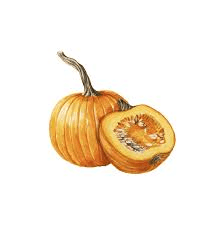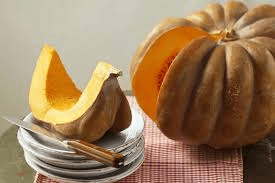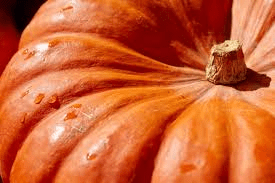Pumpkin skin, often overlooked and discarded during the preparation of pumpkin-based dishes, is a highly nutritious and versatile part of the pumpkin. The skin, which is typically thick and varies in color from orange to green or white, is packed with vitamins, minerals, and antioxidants that contribute to overall health. Understanding the benefits and uses of pumpkin skin can encourage more sustainable and health-conscious practices in the kitchen.
One of the key nutritional benefits of pumpkin skin is its high fiber content. Dietary fiber is essential for digestive health, aiding in regular bowel movements, and promoting a healthy gut microbiome. Consuming fiber-rich foods like pumpkin skin can help prevent constipation and support weight management by promoting a feeling of fullness. Additionally, the skin contains a range of vitamins, particularly vitamin A (in the form of beta-carotene), vitamin C, and vitamin E. These vitamins play vital roles in maintaining healthy vision, supporting immune function, and protecting the skin from oxidative damage.
Pumpkin skin also contains various minerals, including potassium, magnesium, and zinc. Potassium is crucial for maintaining healthy blood pressure levels and proper muscle function. Magnesium supports numerous biochemical reactions in the body, including energy production and bone health. Zinc is important for immune function, wound healing, and DNA synthesis. Together, these nutrients make pumpkin skin a valuable addition to a balanced diet.
In the culinary world, pumpkin skin can be used in several ways. When preparing pumpkins for cooking, the skin can be left on for roasting or baking, as it becomes tender and edible when cooked. Roasted pumpkin skin can add texture and flavor to dishes, making it a tasty addition to salads, soups, or grain bowls. The skin can also be pureed along with the flesh for making soups, sauces, and pumpkin puree, adding extra nutrients and fiber to the final product.
For those who prefer a crispier texture, pumpkin skin can be made into chips. Simply slice the skin into thin strips, toss with a bit of olive oil and seasoning, and bake until crispy. Pumpkin skin chips are a nutritious and delicious snack that can be enjoyed on their own or used as a garnish for soups and salads.
Pumpkin skin can also be used in making broths and stocks. Adding the skin to vegetable or meat broths enhances the flavor and boosts the nutrient content of the broth. Once the broth is cooked, the skin can be discarded or blended into the broth for additional thickness and nutrition.
Beyond its culinary uses, pumpkin skin has potential applications in skincare. Due to its high content of vitamins and antioxidants, pumpkin skin can be used to make natural facial masks and exfoliants. These treatments can help rejuvenate the skin, reduce inflammation, and promote a healthy glow. The enzymes and alpha hydroxy acids in pumpkin skin can gently exfoliate the skin, removing dead skin cells and improving skin texture.
From an environmental perspective, using pumpkin skin in cooking and skincare helps reduce food waste. Instead of discarding this nutrient-rich part of the pumpkin, it can be utilized in various ways to maximize the value of the entire fruit. Any leftover skin that isn’t used can be composted, contributing to soil health and sustainability.
Pumpkin skin is a highly nutritious and versatile component of the pumpkin that should not be overlooked. Its rich content of fiber, vitamins, and minerals makes it a valuable addition to a healthy diet.
Whether roasted, baked into chips, added to broths, or used in skincare routines, pumpkin skin offers numerous benefits. By incorporating pumpkin skin into our meals and beauty practices, we can enhance our health, reduce food waste, and enjoy the full range of benefits that this remarkable fruit has to offer.
The Economic Importance and Uses of Pumpkin Skin

1. Food Ingredient: Pumpkin skin can be used in various culinary dishes, such as chips and crisps. For example, roasted pumpkin skin chips are a healthy snack.
2. Animal Feed: Leftover pumpkin skin from processing can be used as animal feed, providing a nutritious option for livestock.
3. Dietary Supplements: Pumpkin skin is rich in fiber and antioxidants, making it a valuable ingredient in dietary supplements.
4. Fertilizer: After processing, pumpkin skin can be composted to enrich soil quality.
5. Cosmetic Products: Pumpkin skin contains nutrients and antioxidants that are beneficial for skin health, making it a useful ingredient in skincare products like masks and scrubs.
6. Pet Food: Pumpkin skin can be included in pet foods and treats, providing fiber and vitamins for pets.
7. Culinary Arts: Chefs use pumpkin skin creatively in gourmet dishes, enhancing their menus with unique textures and flavors.
8. Ethnic Cuisine: In some cultures, pumpkin skin is used in traditional dishes, adding flavor and texture. For example, it is used in stews and soups.
9. Nutrient Extraction: The skin of the pumpkin is used to extract valuable nutrients like beta-carotene for various food and health products.
10. Anti-Inflammatory Properties: The antioxidants in pumpkin skin have anti-inflammatory properties, making it useful in health products aimed at reducing inflammation.
11. Weight Management: Due to its high fiber content, pumpkin skin can aid in weight management by promoting satiety.
12. Environmental Sustainability: Utilizing pumpkin skin reduces food waste and promotes sustainable practices in food production.
13. Snack Products: Pumpkin skin can be dried and seasoned to make crunchy snacks. For example, pumpkin skin crisps.
14. Herbal Medicine: Pumpkin skin is used in traditional medicine for its anti-inflammatory and antioxidant properties.
15. Food Decoration: In culinary presentations, pumpkin skin can be used decoratively to enhance the visual appeal of dishes.
16. Food Preservation: Pumpkin skin can be dried and preserved for later use, providing a long-lasting food source.
17. Crafting and Art: The tough texture of pumpkin skin makes it suitable for crafting and decorative arts.
18. Tea Production: Pumpkin skin can be dried and used to make herbal teas, offering a unique flavor and health benefits.
Read Also: Burmese Cat Breed (Felis catus) Description and Complete Care Guide
The Products and By-products That Can Be Derived From Pumpkin Skin

1. Pumpkin Skin Chips: Thinly sliced, seasoned, and roasted pumpkin skin used as a healthy snack. Example: crunchy pumpkin skin chips.
2. Pumpkin Skin Powder: Dried and ground pumpkin skin used as a dietary supplement or food ingredient. Example: pumpkin skin powder for smoothies.
3. Pumpkin Skin Tea: Dried pumpkin skin used to make herbal tea. Example: pumpkin skin herbal tea.
4. Pumpkin Skin Extract: Extracted nutrients from pumpkin skin used in supplements and cosmetics. Example: pumpkin skin extract capsules.
5. Pumpkin Skin Fertilizer: Compost made from decomposed pumpkin skin used to enrich soil. Example: organic pumpkin skin compost.
6. Pumpkin Skin Facial Masks: Skincare products made with pumpkin skin for its antioxidant properties. Example: pumpkin skin face mask.
7. Pumpkin Skin Scrubs: Exfoliating scrubs made with ground pumpkin skin. Example: pumpkin skin body scrub.
8. Pumpkin Skin Pet Treats: Dried pumpkin skin used as a treat for pets. Example: crunchy pumpkin skin dog treats.
9. Pumpkin Skin Broth: A flavorful broth made by boiling pumpkin skin with other ingredients. Example: pumpkin skin vegetable broth.
10. Pumpkin Skin Decoctions: Boiled pumpkin skin used in traditional medicine for its health benefits. Example: pumpkin skin medicinal decoction.
11. Pumpkin Skin Crafts: Artistic items made from dried pumpkin skin. Example: pumpkin skin ornaments.
12. Pumpkin Skin Seasoning: Dried and ground pumpkin skin used as a seasoning in cooking. Example: pumpkin skin seasoning blend.
13. Pumpkin Skin Jams: Jams made from cooked pumpkin skin and sweeteners. Example: pumpkin skin marmalade.
14. Pumpkin Skin Flour: Flour made from dried and ground pumpkin skin, used in baking. Example: pumpkin skin flour for bread.
15. Pumpkin Skin Candies: Candied pumpkin skin made by boiling in sugar syrup. Example: pumpkin skin candy.
16. Pumpkin Skin Enzyme Extract: Used in cosmetics for its exfoliating properties. Example: pumpkin skin enzyme serum.
17. Pumpkin Skin Snacks: Various snacks made from seasoned and roasted pumpkin skin. Example: pumpkin skin nacho chips.
Read Also: Himalayan Cats (Felis catus) Description and Complete Care Guide
Frequently Asked Questions (FAQ’s) About Pumpkin Skin

1. Can you eat pumpkin skin?
Yes, pumpkin skin can be eaten. It is often roasted or cooked until tender.
2. How do you prepare pumpkin skin for cooking?
Wash the pumpkin thoroughly, peel if desired, or cook the skin directly by roasting, boiling, or frying.
3. What are the health benefits of pumpkin skin?
Pumpkin skin is rich in fiber, antioxidants, and vitamins, which can support digestive health and reduce inflammation.
4. Can pumpkin skin be used in baking?
Yes, pumpkin skin can be dried and ground into flour or used as an ingredient in baked goods for added texture and nutrition.
5. How long does pumpkin skin last after harvesting?
Fresh pumpkin skin can last for several weeks if stored in a cool, dry place. It can also be dried for longer storage.
6. Is pumpkin skin safe for pets?
Yes, pumpkin skin can be safe for pets when properly prepared. It provides fiber and nutrients, but it should be given in moderation.
7. How do you make pumpkin skin chips?
Slice the pumpkin skin thinly, season with oil and spices, and roast in the oven until crispy.
8. Can pumpkin skin be composted?
Yes, pumpkin skin can be composted and used to enrich garden soil.
9. What dishes can I make with pumpkin skin?
You can make chips, broths, teas, and incorporate it into stews, soups, and salads.
10. Is pumpkin skin used in traditional medicine?
Yes, pumpkin skin has been used in traditional medicine for its anti-inflammatory and antioxidant properties.
Read Also: Comminutor and Grinder Process





